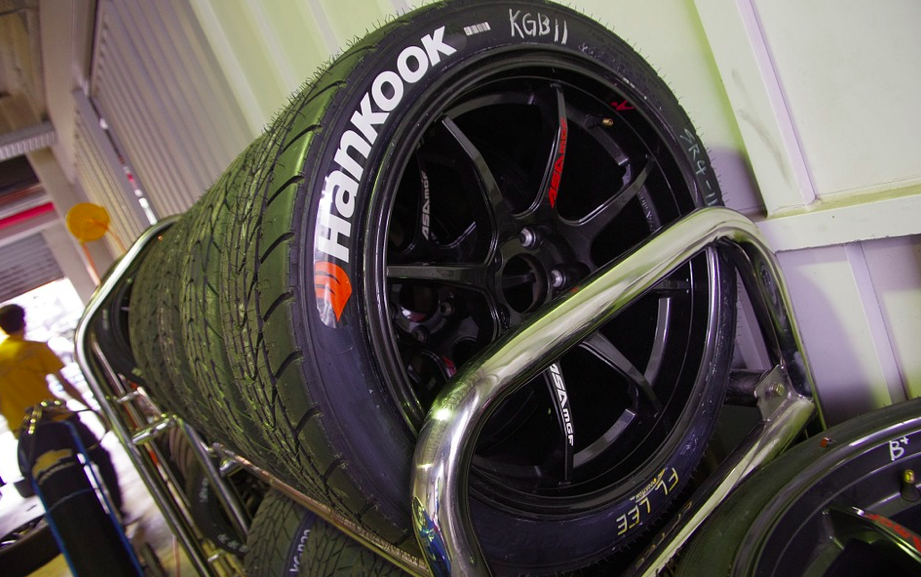Last Updated on April 21, 2024
The Future of Driving: How Eco-Friendly Tires are Making a Difference
With engines going electric and alternative fuel sources growing in popularity, the eco-friendly green wave has fully engulfed the car industry. But the engine is only one part of the car. A significant component that requires replacing is the humble tire. Tire manufacturers are using three main methods to do their part in saving the environment and making eco-friendly tires.
In today’s age of conscious consumption, eco-friendly products are making their mark in every industry, and the tire market is no exception. As the world strives to reduce its carbon footprint, introducing eco-friendly tires is a testament to the industry’s commitment to a greener planet. But what exactly are eco-friendly tires, and why should they be on your radar?
What Makes a Tire Eco-Friendly?
Unlike traditional tires, eco-friendly ones are designed with the environment and performance in mind. They are typically made from sustainable materials, including recycled or renewable materials like dandelion rubber. Furthermore, their production processes are designed to minimize waste and reduce energy consumption.
Benefits of Eco-Friendly Tires
- Lower Rolling Resistance: These tires are engineered to reduce the energy they use, translating to better fuel efficiency for your vehicle.
- Durability: Eco-friendly tires often come with improved wear characteristics, ensuring they last longer and reduce the frequency of tire replacements.
- Reduced Carbon Footprint: From production to performance, these tires ensure minimal environmental impact, making them a top choice for the eco-conscious driver.
Tire Construction

The first key component of an eco-friendly tire is the raw material used. Companies attempt to replace rubber with a synthetic blend, often incorporating silica. Silica can not only help replace rubber in the treads but reduces road friction – which we’ll come back to in a moment.
The tire’s construction, from treads to sidewalls, is also essential in keeping the tire green. Stiffer sidewall construction reduces the heat generated by the tire, which contributes to the tire’s longevity.
Aside from rubber, companies are also investigating ways to reduce the amount of petroleum used in creating a tire. Between 5 and 10 gallons of petroleum oil make a single tire, which the industry has been trying to cut back or eliminate for over 20 years.
Making synthetic rubber is also hard on the environment, leading manufacturers to try to cut synthetic rubber usage in half. Carbon black is used as filler for treads, though, as mentioned, silica is increasingly prevalent as a replacement.
More sustainable plant-derived materials are making headway as substitutes for various tire components, such as sunflower oil instead of petroleum and flora-derived latex replacing rubber. Even oil derived from orange peels has been used instead of more toxic chemicals.
Rolling Resistance
As mentioned, silica helps reduce rolling resistance or energy loss as the tire deforms against the road. Conserving energy also increases fuel efficiency. Rolling resistance accounts for 10-15 per cent of fuel consumption in passenger cars but can be as much as 30 per cent of fuel usage in large trucks. While low rolling resistance tires may only reduce that by 2 to 3 per cent, it’s still fuel savings – not only helping the environment but your wallet, as well.
Keeping your tires inflated near the recommended inflation level, it should be noted, can also help in saving fuel. The second benefit, a byproduct of how efficient the car is running, is reduced CO2 emissions.
Low-rolling resistance tires have improved significantly since they were introduced, providing good all-around performance, and most manufacturers offer low-rolling resistance tires.
Wear and Tear
The tread – often a proprietary pattern unique to a manufacturer – makes a great deal of difference in how quickly a tire will wear down. For example, a winter tire used in summer will wear down quickly. The tire composition and tread are not made for summer driving and will be rendered unusable much faster than in colder conditions.
As noted above, materials contribute to the tire’s lifespan, and what goes into treads can also help leave less proverbial rubber on the road. As tread patterns continue to develop and what the treads are made of improves, tires will see better rolling resistance and less wear, with better durability and longevity–meaning longer times between replacements. Fewer replacements directly equate to fewer tires needed, cutting down on materials required for manufacturing.
Building a Better Tire

Let’s look at an example of how construction, rolling resistance, and durability go into making a tire. Hankook tires feature the company’s “Kontrol technology,” which was introduced in 2008. The aim is to improve “performance, safety, and comfort” and make eco-friendly tires.
The “k” in “Kontrol” stands for “kinetic,” the company says, which ties into rolling resistance. Not only is Hankook focused on reducing what it calls rotational resistance, but they use silica in its treads.
The eco-friendly materials used do not stop at silica, however, as Hankook is replacing oil byproducts like synthetic rubber, carbon black, and synthetic oil.
On top of making the tire itself eco-friendly, Hankook is improving the manufacturing process by purifying water contaminants produced as byproducts and minimizing greenhouse gas emissions.
Like other manufacturers, they work hard to ensure that eco-friendly does not mean a sub-par tire, focusing attention on how the tire vibrates, grips the road, wears, and even how much noise the tire produces.
Tire companies are cutting down on using materials harmful to the environment while reducing friction, thus increasing fuel efficiency. As a result of less fuel used, CO2 emissions are also reduced, and the car becomes greener.
With less wear on the tire, durability and longevity are extended, meaning fewer trips to replace tires. Tire manufacturers don’t have to produce as many tires, saving materials and the energy needed to create the tires. In the end, manufacturers can provide high-quality, eco-friendly tires.
Popular Brands Leading the Eco-Friendly Revolution
Several tire manufacturers are stepping up to meet the growing demand for sustainable tire options. Brands like Michelin, Bridgestone, and Goodyear have introduced eco-friendly ranges that promise performance and environmental responsibility.
Michelin:
- Known for its “Green X” label, Michelin’s eco-friendly tires offer optimal energy efficiency through reduced rolling resistance.
- Their “EnergySaver” eco-friendly tires aim to curb CO2 emissions, ensuring durability and fuel efficiency.
Bridgestone:
- The brand’s “Ecopia” eco-friendly tires are designed with low rolling resistance, promoting fuel efficiency and reduced greenhouse gas emissions.
- Bridgestone is also at the forefront of researching and producing sustainable tire materials, including eco-friendly tires made from dandelion-derived rubber.
Goodyear:
- With the “EfficientGrip Performance” range, Goodyear’s eco-friendly tires are tailored for reduced fuel consumption and CO2 emissions.
- The company has innovated using soybean oil in eco-friendly tires, ensuring enhanced flexibility and performance across different temperatures.
Continental:
- Continental’s eco-friendly “EcoContact” tires stand out for their reduced rolling resistance and commitment to decreasing CO2 emissions.
- Their “Taraxagum” project indicates their dedication to sustainable raw materials, exploring alternatives like dandelion rubber for their eco-friendly tires.
Pirelli:
- The “Cinturato P7” by Pirelli incorporates green performance techniques, making these eco-friendly tires ideal for those seeking reduced rolling resistance and fuel consumption.
- Pirelli constantly innovates to produce eco-friendly tires that minimize environmental impact throughout their lifecycle.
Yokohama:
- The “BluEarth” series of eco-friendly tires from Yokohama uses orange oil to ensure the rubber remains soft, focusing on fuel efficiency and wet grip performance.
- The brand not only promotes eco-friendly tires but also actively supports environmental preservation activities.
Nokian Tyres:
- Recognized for creating the world’s first winter eco-friendly tire made without harmful oils, the “Hakkapeliitta R2” is a testament to Nokian’s commitment to the environment.
- Nokian Tyres places a strong emphasis on producing eco-friendly tires with reduced rolling resistance, leading to diminished fuel consumption.
These leading brands are championing the cause for eco-friendly tires, setting industry standards, and proving that eco-friendliness and performance can coexist.
Making the Switch
Transitioning to eco-friendly tires is not just about aiding the environment; it’s also about enjoying enhanced driving performance. As the technology behind these tires continues to evolve, drivers can expect even better fuel efficiency, durability, and handling from their green tires.
Conclusion
In a world rapidly moving towards sustainable solutions, eco-friendly tires present a step in the right direction. By choosing them, you’re investing in a product that delivers on performance and resonates with the planet’s well-being.
In the evolving landscape of automotive innovation, eco-friendly tires are emerging as a pivotal link between environmental sustainability and peak vehicular performance. These tires, born from cutting-edge research and technological advancements, promise a future where motorists don’t have to compromise between eco-conscious choices and efficient driving experiences.
As global brands champion this green revolution, it’s evident that the road ahead is one where our vehicles tread lightly on the environment while delivering unparalleled performance.
Choose eco-friendly; choose the future.
FAQs
What are eco-friendly tires?
Eco-friendly tires, often termed “green tires,” are designed to reduce environmental impact in their production and throughout their lifecycle. They use sustainable materials and advanced technologies to reduce carbon emissions, enhance fuel efficiency, and reduce overall carbon footprint.
Can tires be eco-friendly?
Absolutely! Through innovations in materials and design, many manufacturers now produce tires that are more environmentally friendly. These tires generally offer reduced rolling resistance, leading to better fuel economy, and are often made from sustainable or recycled materials.
What are eco-friendly tires made of?
Eco-friendly tires are primarily made of sustainable materials, including natural rubber, bio-based elastomers, and fillers like silica. Some green tires also incorporate recycled rubber or other renewable compounds. The goal is to utilize materials that have minimal environmental impact without compromising on performance.
Are rubber tires eco-friendly?
Traditional rubber tires, especially those made purely from synthetic rubber and chemicals, aren’t the most eco-friendly option due to their manufacturing process and non-biodegradability. However, with the introduction of natural rubber, recycled rubber, and other sustainable materials in tire production, the newer generation of tires is becoming increasingly eco-friendly.








